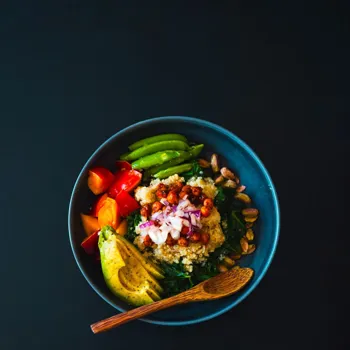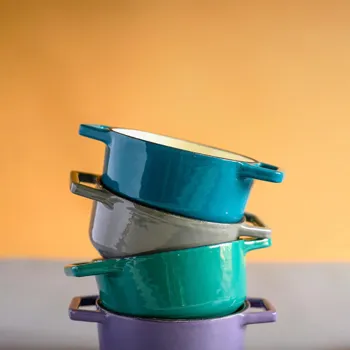Unravel the secrets of portion control for a healthier you! Dive into 7 practical tips for mindful eating
In our busy lives, filled with tempting food options everywhere we look, maintaining a healthy diet
can feel like a constant struggle. We're surrounded by delicious aromas and eye-catching advertisements that urge us to indulge.
But there's a simple, effective tool that can help us achieve our health goals without feeling deprived: portion control.
It's not about restrictive dieting or eliminating your favourite foods; rather, it's about being mindful of how much you're eating and making informed choices that support your well-being.
Understanding and implementing portion control strategies can lead to sustained weight management, improved digestion, and increased energy levels.
So, let's dive into the world of sensible eating and discover seven practical tips that will help you navigate the art of portion control and embrace a healthier lifestyle.
Food portion sizes increasing causing overeating, weight gain
These days, the sizes of food servings have increased a lot, both at home and when we eat out. This "portion creep," as experts call it, can easily lead to overeating without us even realizing it.

When we consistently eat bigger portions than our body needs, we take in more calories than we burn, which can result in weight gain over time. Plus, overeating can strain our digestive system, leading to discomfort and sluggishness.
Portion control helps to reset your perspective on your food intake and to know the amount you are actually consuming. Portion control gives you an idea about how much your body needs.
Use Smaller Plates and Bowls
Our visual perception plays a big role in how satisfied we feel after a meal. Serving your food on smaller plates and bowls can trick your brain into thinking you're eating more than you actually are. This simple trick can lead to reduced calorie intake without sacrificing your sense of fullness.
Visual cues are powerful. The appearance of abundance, even if it’s on a smaller scale, can trick our minds into thinking we are satisfying our appetite. Smaller dessert plates can be used for the entire dinner plate.
Using small plates at home is one thing, and for restaurants you can ask for a small plate so you can put less food on it.
Measure Your Food
Eyeballing your portions can be surprisingly inaccurate. Invest in measuring cups and spoons to get a precise idea of how much you're actually consuming. This is especially helpful when you're first starting out with portion control.

Regularly practicing portion control with measuring spoons and cups, you’ll get to a point where you will be able to determine how much you have to put into your plate everyday. This is important so you don’t put yourself on a strict diet.
It is important to understand portion control is a simple task.
Be Mindful While Eating
Pay close attention to your body's hunger and fullness cues. Avoid distractions like television or your phone while eating, as these can disrupt your awareness of how much you're consuming. Eat slowly and savor each bite, allowing your brain time to register when you're feeling full.
Start taking small bites, while chewing your food. Eat without any distractions like watching TV, playing games on your phone or scrolling through social media. Pay attention to your body and stomach to understand if it wants to eat more or not.
Vegetables, fruits, and lentils make a balanced plate
Vegetables and fruits should be the star of your plate or bowl. These foods are filling to the stomach because it is high in nutrients, low in calories, and rich in fiber, helping you feel happy on fewer calories.
Fill half of your plate with vegetables, like a colorful salad, which will keep you eating more and giving more nutrients. A good amount of dal will keep you satisfied. Lentils are perfect because they provide fiber and even protein, and are low in calories.
A combination of these is perfect for your body.
Read Food Labels Carefully
Pay close attention to serving sizes listed on packaged foods and adjust your portions accordingly. Don't assume that one package equals one serving.
The Nutrition Facts Label might include information on the amount of calories, total fat, cholestrol, sodium, total carbohydrate, protein, vitamin d, iron, calcium and potassium present in the product. It also displays the percentage of daily value in your food.
Be mindful about eating packaged food. Processed foods tend to be high in sugar, sodium and fat. Be wary about eating this.
Portion snacks on a plate for mindful eating
It's so easy to reach into a bag of chips or a box of biscuits and mindlessly munch away, losing track of how much you've eaten. Instead, portion out a serving size into a bowl or plate. This simple step creates a visual boundary that helps you stay aware of your intake.
Always take the snacks on a plate so that you can control how much you’re eating. Because if you take the snack directly from the snacks you’re eating, you might not realise what is the amount that you’re consuming.
Plan Meals and Snacks
Planning your meals and snacks in advance can help prevent impulsive decisions that lead to overeating. When you have a clear idea of what you're going to eat, you're less likely to grab something convenient but unhealthy.
Planning your meals ahead of time gives you peace of mind and helps you make better choices about what foods to eat. A good thing to do is meal preparation, you can prepare your meals with good portion sizes in advance. Prepare what you want to eat the day before.
Master portion control for a healthier, balanced lifestyle
By incorporating these seven tips into your daily life, you can embark on a journey towards healthier eating habits without feeling deprived or restricted.
Remember, portion control is about empowering yourself with knowledge and mindful awareness, allowing you to enjoy your favorite foods in moderation while nourishing your body and achieving your health goals. Take small, gradual steps, and celebrate your progress along the way.
With consistent effort and a positive mindset, you can master the art of portion control and create a sustainable, healthy lifestyle that you truly enjoy.

